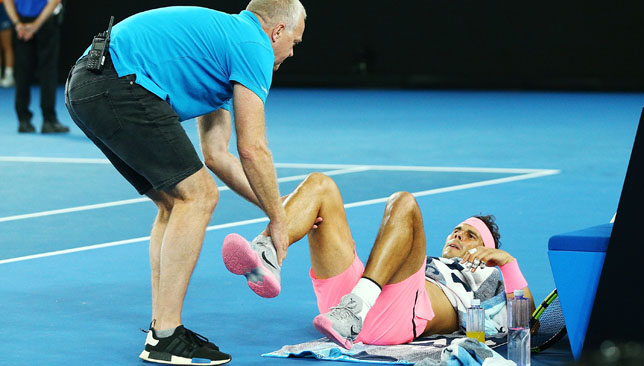
Covering men’s tennis the past couple of years has felt like writing reviews of Grey’s Anatomy episodes.
Keeping track of all the injuries that have ravaged the tour and sidelined many of its top stars for extended periods of time has resulted in me having a an orthopedic surgeon on speed dial to be able to get expert opinion each time a player announces his bad news.
Injury is part of any professional sport – that is not debatable. But it’s also worrying when so many of tennis’ top stars are spending more time off the court nursing physical problems.
Roger Federer, Rafael Nadal, Novak Djokovic, Andy Murray, Stan Wawrinka, Kei Nishikori, Milos Raonic, Tomas Berdych, Kevin Anderson… these are just a few of many players who have been forced to spend time away from tennis at some point during the past two years because of injuries.
Djokovic walked away from the Australian Open in pain over his ongoing elbow problem that kept him out of the game for six months in 2017. Murray wasn’t able to compete in Melbourne after undergoing hip surgery for a problem that also had kept him sidelined since Wimbledon last year. Wawrinka had double knee surgery last August and missed the same amount of time as Djokovic did, with his return at the Australian Open short-lived as he still works on regaining full fitness.
Nadal’s latest setback was an inner hip muscle problem that hampered him during his five-set loss to Marin Cilic in the quarter-finals on Tuesday. It will require him to rest for three weeks.
He told reporters at Melbourne Park that officials running the ATP tour should investigate all these injuries and think about the health of their players – who are essentially the tour’s product that brings in all the money and attention.
Nadal, Murray and many others have long made the argument that the ATP should adjust the schedule, which runs from January until late November each year.
Cilic does not agree and said on Tuesday that it’s up to the players to choose a schedule that suits them and that cutting down on tournaments would hurt the tour and its global reach.
But that’s easier said than done. Players aren’t that free to choose tournaments. There is a minimum number of events players are required to compete in: eight mandatory Masters 1000s, four Grand Slams, ATP Finals (if they qualified), four ATP 500s, one of which must be in the period after the US Open, and two more from 250s or other tiers.
If you’re someone like Federer, Nadal, Djokovic, or Murray, then you’ve been contesting all these events for more than a decade, making it deep into the draws of most of them. Those aren’t players who have a couple of good tournaments each season and lose first round the rest of the year. They’ve experienced great success and their bodies have paid the price for it – to different degrees of course.
Nadal and Murray have backed the idea of having less mandatory tournaments required by the ATP, which wouldn’t result in the season getting shorter, but would allow players to have more flexibility with their schedules.
If the ATP chiefs are worried they wouldn’t have their top stars at the big tournaments if they’re no longer mandatory, they might want to look closer at the ever-growing list of injured players, who are missing events anyway because they simply cannot play.
The top five players in the world rankings at the end of 2016 were: Murray, Djokovic, Raonic, Wawrinka and Nishikori. They all shut down their 2017 seasons early for injuries and their rankings now are: 19, 14, 23, 8, and 24. Wawrinka will drop from No8 to 15 after the Australian Open.
Are we getting to a point where if you succeed one season, you have to fall apart the next?
The issue of the tour and the schedule has been a never-ending saga. It’s finally tie to put some real thought and action into the issue and coming up with realistic solutions. Revisiting the mandatory tournaments structure would be a good place to start.